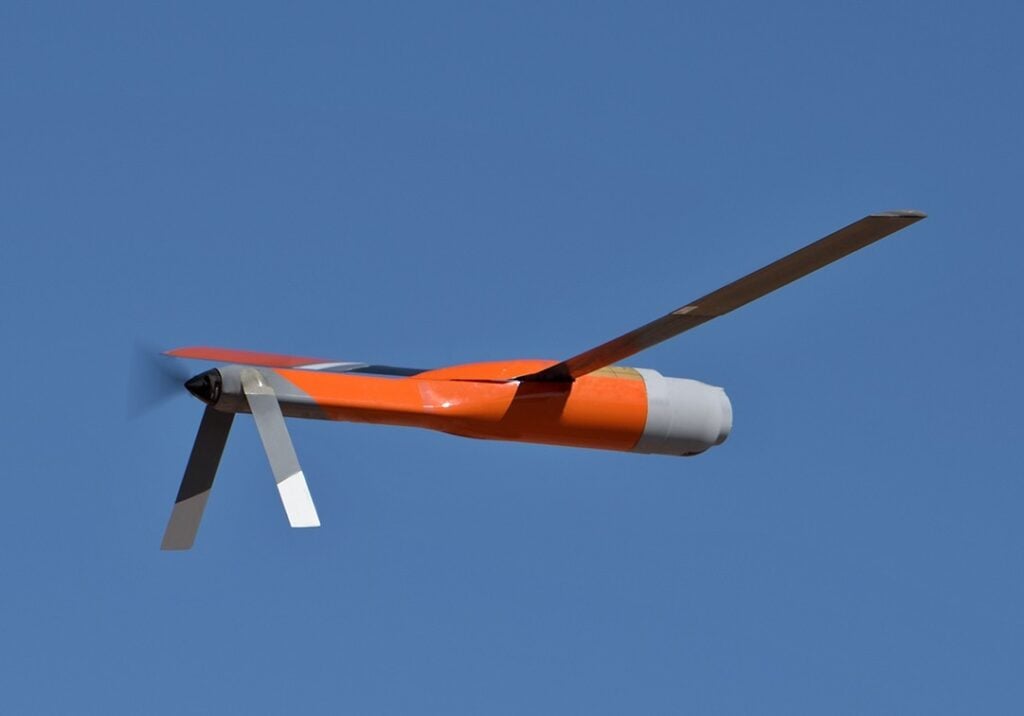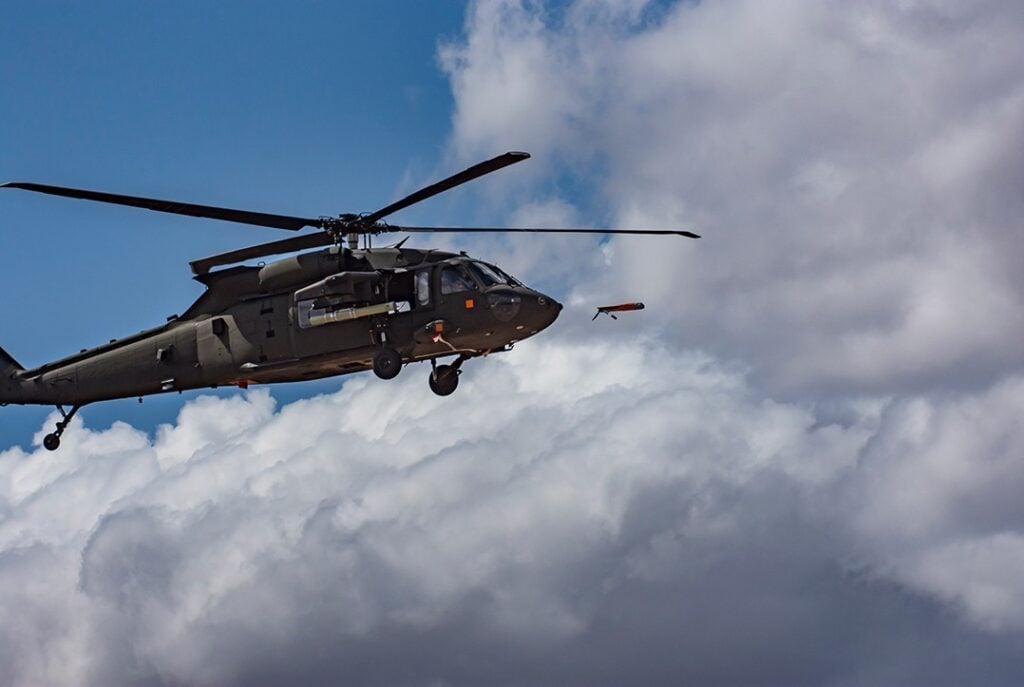
ALTIUS mini-drone in flight over Yuma Proving Ground.
WASHINGTON: Venture-capital backed defense firm Anduril announced today it has acquired Area-I, maker of the ALTIUS multi-purpose mini-drone.
In field experiments, ALTIUS has been launched from Air Force Special Operations AC-130 gunships and Army UH-60 Black Hawk helicopters. The mini-drone gives the larger, more expensive manned aircraft an expendable scout they can sent ahead into danger. The Army’s Project Convergence experiments in particular have used ALTIUS as a surrogate for future Air-Launched Effects (ALE).
“The ALTIUS product is incredible…the most flexible, capable platform you have in this space” of air-launched mini-drones, Anduril CEO Brian Schimpf told me. It’s been successfully fitted with multiple types of sensors and launched from multiple types of platform.
But everything Area-I’s accomplished so far has been funded by government contracts, a laborious process that’s slowed their progress. Being part of Anduril gives them access to venture capital, investment that comes much faster than federal funds.
“Up until a couple days ago we were completely bootstrapped, [with] no external investment,” Area-I founder Nick Alley told me. “That has held us back.” Now, with Anduril’s backing, Alley can move out on a long backlog of “cool stuff” he’s wanted to do with the technology.
Area-I was founded in 2009 to use engineering modeling tools that Alley had started developing in graduate school. It began work on ALTIUS in 2011, originally for AFSOC AC-130 gunships. It took some tricky engineering — and a lot of crashes — to get the mini-drone to launch successfully from a standard munitions dispenser, unfold its wings, and settle into stable flight without the gunship’s powerful slipstream sending it into an unrecoverable tumble.

A UH-60 Black Hawk launches an ALTIUS mini-drone at Yuma Proving Ground.
“We burned a lot of holes in the ground in the early days,” Alley said – albeit small ones. “We’ve solved that problem.”
Launching from Army helicopters is comparatively easy, Alley told me. Even so, he said, “it does a lot of weird things. Every launch is very chaotic.”
Once in flight, ALTIUS has enough processing power to run all sorts of high-tech payloads, Alley said. And Anduril brings additional expertise in this kind of compact computing in small devices “on the edge” of the battlefield network, as opposed to traditional centralized server farms. That allows drones to analyze a lot of their data onboard and only transmit the essential highlights, rather than having to hog bandwidth transmitting everything back to headquarters for analysis.
That’s the essential unifying thread between Anduril and Area-I, Schimpf told me: In both companies, “everything we do is processed at the edge.”
And what’s possible on the edge keeps getting more impressive. “The amount of compute you can get on something smaller than a smartphone is incredible, even compared to a year or two go,” he said. “We can take those advances” from the commercial sector and get them working for the military “in months – not years.”
Lockheed Martin projects potential $1 billion loss on classified program
Lockheed CFO Jay Malave said the company currently expects the program to become profitable on an annual basis around the 2028 timeframe.


























